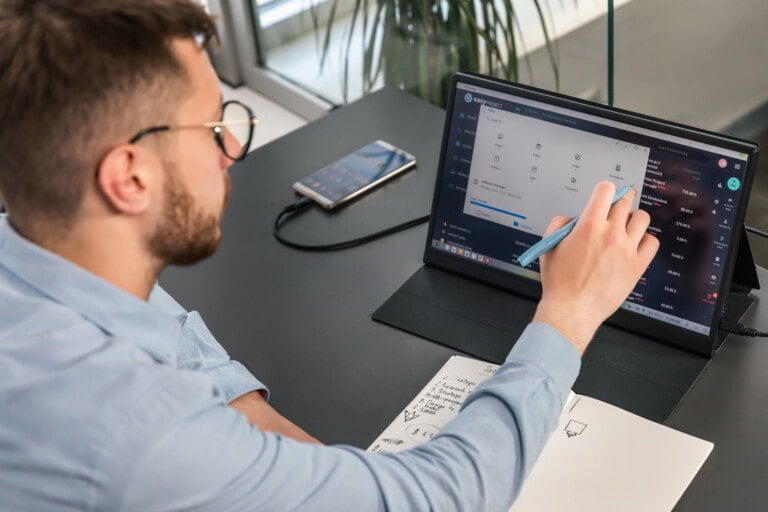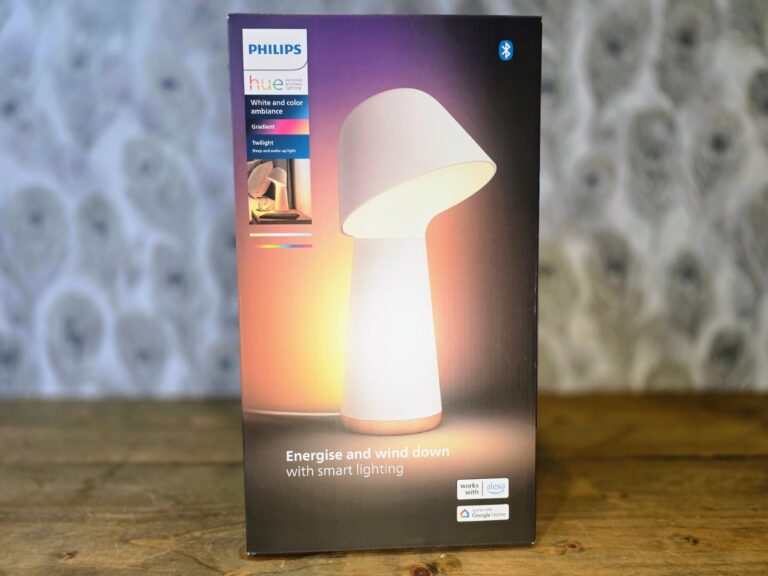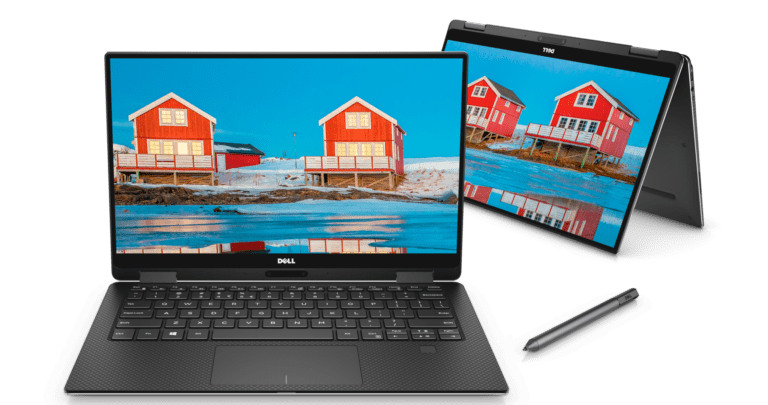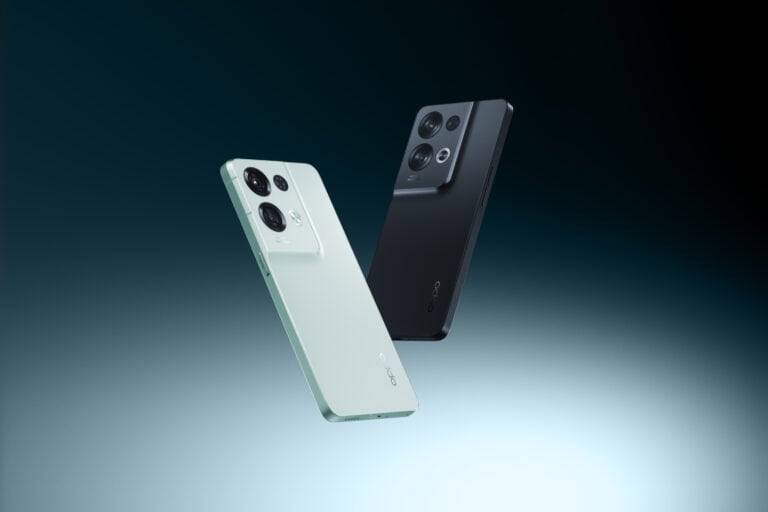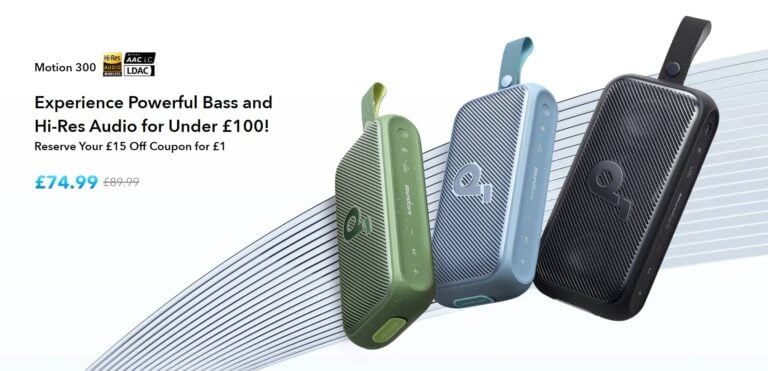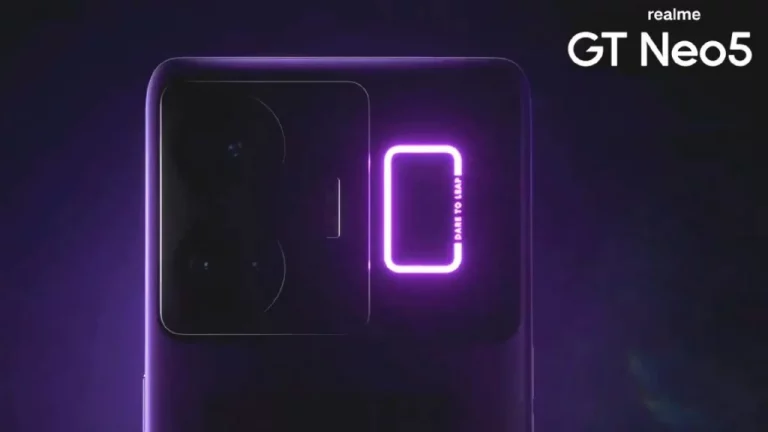Any links to online stores should be assumed to be affiliates. The company or PR agency provides all or most review samples. They have no control over my content, and I provide my honest opinion.
The Samsung Galaxy A50 was announced back in February; this was subsequently followed each month by the A70 then the A80. These mid-range smartphones have been aimed at the global market, thanks to the budget A20e and A40 models, they have sold five million units of its A series within 70 days of its March 1 launch in India, garnering $1 billion in sales.
While the A20e and A40 will fly off the shelves due to their pricing, the mid-range line up has some impressive specs that are worth considering over a premium price flagship such as Samsung’s own Galaxy S10
If you are looking for your next upgrade, you may be wondering which phone to go for? Is the A80 worth double the price of the A50? Or should you opt for the middle ground A70?
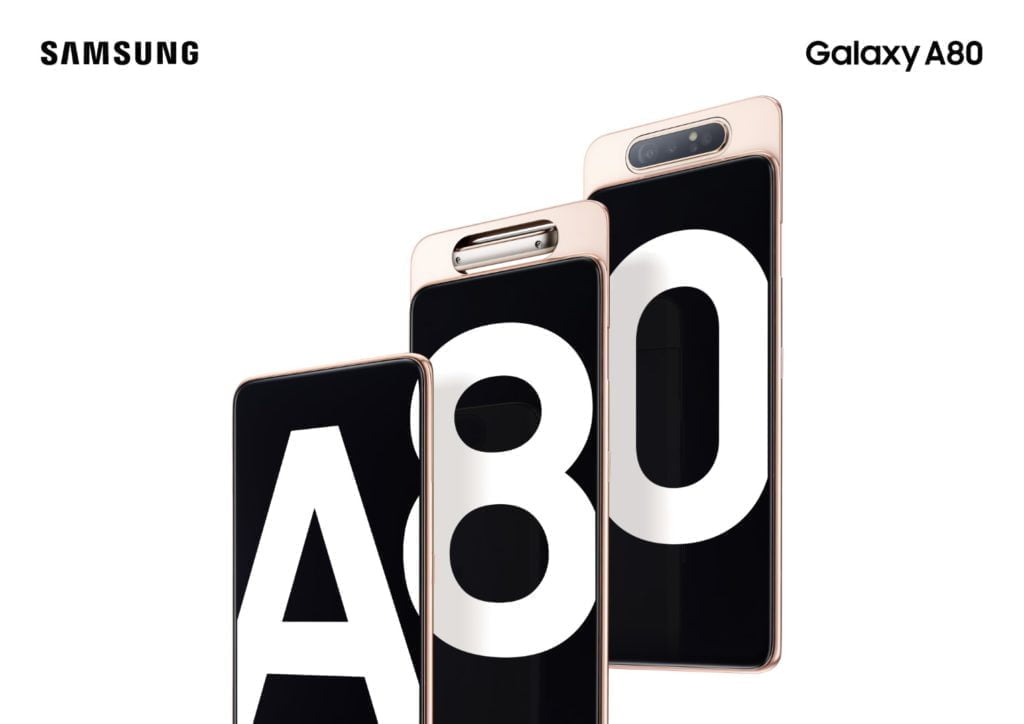
Pricing
The A50 is naturally the most affordable of the three, in the UK it is available for just £273.90 via Amazon, making it a fantastic affordable option. I find £200-300 to be a sweet spot for affordable phones, you get a lot of spec for your money with other phones at this price point being the Honor 20 Lite, Huawei P30 Lite and the Motorola moto one vision.
For around £100 extra you can get the Samsung Galaxy A70 128GB which is available on Amazon Prime for £369, again this is still well priced, sitting below the cheapest flagships on the market, while offering some flagship competing specs such as a triple lens rear camera, in display fingerprint reader and more.
The Galaxy A80 is undeniably the most impressive of the bunch with its slide and flip camera which will likely make it the best selfie phone on the market. At the moment exact pricing is unknown, it hasn’t launched officially yet, but the official EU price is 649-Euros. There are placeholders on Amazon, indicating £615.34 which is about right based on the EU price. The problem here is that it is well into the flagship territory, so it depends how much you value a camera over a chipset.
[content-egg module=Amazon template=list]

Chipset, RAM and Storage
With each phone sitting on a different rung on the ladder, at a different price, the chipset used is one of the major differences between each phone.
For me, I think we have arrived at a point in smartphone technology where almost all phones perform to an acceptable level. Things like gaming, video editing or power users multi-tasking may benefit for a better chipset, but for general day to day use, you can live with something lower down.
The Galaxy A80 has the new Snapdragon 730G and the only phone on the market to have it so far, the Redmi K20 has the slightly slower Snapdragon 730 but also costs half the price.
The SD730 has an octa-core processor (2×2.2 GHz Kryo 470 Gold & 6×1.8 GHz Kryo 470 Silver), and this is combined with an Adreno 618. The CPU cores are based on Cortex-A76 and Cortex-A55
The A70 has the not as new Snapdragon 675 which uses an octa-core processor (2×2.0 GHz Kryo 460 Gold & 6×1.7 GHz Kryo 460 Silver) and Adreno 612 GPU. These CPU cores are also based on Cortex-A76 and Cortex-A55.
Lastly, the Galaxy A50 switches to the Samsung made Exynos 9610 with octa-core (4×2.3 GHz Cortex-A73 & 4×1.7 GHz Cortex-A53) and Mali-G72 MP3. This chipset is a little older than the others and was available from October last year.
The A80 and A70 both come with 128GB of storage, but the A80 can’t be upgraded. The A70 has 6GB base RAM but there is an 8GB option, while the A80 is just 8GB.
The base option of the A50 is 4GB and 64GB going up to 6GB and 128GB.
Cameras

The A80 is one of the few phones that shares its rear with the selfie thanks to its beautiful slide and flip mechanism. So this has a 48 MP + 8MP ultra-wide camera and a TOF depth sensor for both front and back. While most phones use the Sony 48MP sensor, it is likely that the Samsung lens is their own Isocell Bright GM2. This also means you can take ultra wide selfies, which will no doubt be popular.
The A70 has a similar layout but slightly lesser specced with 32 MP, 8 MP ultra wide, and 5 MP depth sensor
Again, the A50 is similar but drops that primary camera down to 25MP while keeping the same spec for the others.
For selfies, the A80 uses the rear camera, and the A70 has 32MP while the A50 has 25MP.
Battery
This is an interesting one. The A80 has the worst battery at just 3700 mAh battery which is still not a bad size, but it is outclassed by the huge 4500 mAh battery of the A70. Then the A50 has a 4000 mAh battery.
Both the A80 and A70 have 25W fast charge while the A50 uses 15W.
Display
The A80 and A70 share almost identical specs with a 6.7 inch AMOLED display running at 1080 x 2400 pixels. However, the A70 has a tiny teardrop notch while the A80 has nothing getting in the way. Strangely, the A70 is down as having a larger screen to body ratio of 86% vs 85.8%, but this may not be accurate.
The A50 has a great screen for the price, at 6.4-inches it is a little more pocket-friendly, and it still uses AMOLED while running at 1080 x 2340 pixels.
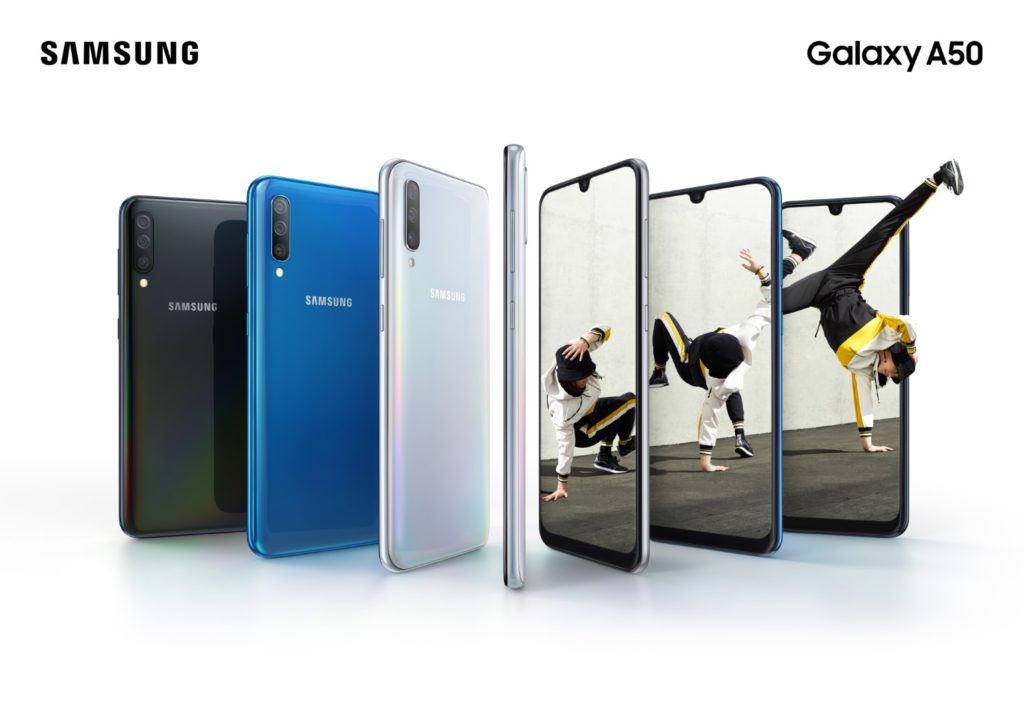
Which is the best buy?
As much as I would love to own the Samsung Galaxy A80, it costs about £250 more than the A70 or around 66% difference, which is a massive difference. I don’t feel that the better camera and chipset are worth that. What you are really paying for is the design, which is fine, if you can afford it, I don’t blame you. It is clearly aimed at the younger generation, and many may feel that a market leading selfie camera could be worth the price, and in that scenario I can’t argue otherwise.
For most people, though, the Samsung Galaxy A70 will offer the best balance between price and performance. That battery will comfortably see you through a couple of days, and for your average user, I doubt you will notice the difference in (rear) camera performance or overall performance.
[content-egg module=Amazon template=list]
Full Specification Comparison
| Samsung Galaxy A80 | Samsung Galaxy A70 | Samsung Galaxy A50 | |
|---|---|---|---|
| Announced | 2019, April | 2019, March | 2019, February |
| Status | Available. Released 2019, May | Available. Released 2019, April | Available. Released 2019, March |
| Dimensions | 165.2 x 76.5 x 9.3 mm (6.50 x 3.01 x 0.37 in) | 164.3 x 76.7 x 7.9 mm (6.47 x 3.02 x 0.31 in) | 158.5 x 74.7 x 7.7 mm (6.24 x 2.94 x 0.30 in) |
| Weight | 220 g (7.76 oz) | 183 g (6.46 oz) | 166 g (5.86 oz) |
| Build | Front glass (Gorilla Glass 3), back glass (Gorilla Glass 6), aluminum frame | Front glass, plastic body | |
| SIM | Single SIM (Nano-SIM) or Dual SIM (Nano-SIM, dual stand-by) | Single SIM (Nano-SIM) or Dual SIM (Nano-SIM, dual stand-by) | Single SIM (Nano-SIM) or Dual SIM (Nano-SIM, dual stand-by) |
| Type | Super AMOLED capacitive touchscreen, 16M colors | Super AMOLED capacitive touchscreen, 16M colors | Super AMOLED capacitive touchscreen, 16M colors |
| Size | 6.7 inches, 108.4 cm2 (~85.8% screen-to-body ratio) | 6.7 inches, 108.4 cm2 (~86.0% screen-to-body ratio) | 6.4 inches, 100.5 cm2 (~84.9% screen-to-body ratio) |
| Resolution | 1080 x 2400 pixels, 20:9 ratio (~393 ppi density) | 1080 x 2400 pixels, 20:9 ratio (~393 ppi density) | 1080 x 2340 pixels, 19.5:9 ratio (~403 ppi density) |
| Protection | Corning Gorilla Glass 3 | Corning Gorilla Glass 3 | Corning Gorilla Glass 3 |
| OS | Android 9.0 (Pie); One UI | Android 9.0 (Pie); One UI | Android 9.0 (Pie) |
| Chipset | Qualcomm SDM730 Snapdragon 730 (8 nm) | Qualcomm SDM675 Snapdragon 675 (11 nm) | Exynos 9610 (10nm) |
| CPU | Octa-core (2x2.2 GHz Kryo 470 Gold & 6x1.8 GHz Kryo 470 Silver) | Octa-core (2x2.0 GHz Kryo 460 Gold & 6x1.7 GHz Kryo 460 Silver) | Octa-core (4x2.3 GHz Cortex-A73 & 4x1.7 GHz Cortex-A53) |
| GPU | Adreno 618 | Adreno 612 | Mali-G72 MP3 |
| Card slot | No | microSD, up to 1 TB (dedicated slot) | microSD, up to 1 TB (dedicated slot) |
| Internal | 128 GB, 8 GB RAM | 128 GB, 6/8 GB RAM | 128 GB, 6 GB RAM or 64 GB, 4 GB RAM |
| Rear Camera | 48 MP, f/2.0, 26mm (wide), 1/2", 0.8µm, PDAF | 32 MP, f/1.7, PDAF | 25 MP, f/1.7, 26mm (wide), PDAF |
| 8 MP, f/2.2, 12mm (ultrawide), 1.12µm | 8 MP, f/2.2, 12mm (ultrawide) | 8 MP, f/2.2, 13mm (ultrawide) | |
| TOF 3D camera, f/1.2, 30mm | 5 MP, f/2.2, depth sensor | 5 MP, f/2.2, depth sensor | |
| Features | LED flash, panorama, HDR | LED flash, panorama, HDR | LED flash, panorama, HDR |
| Video | 2160p@30fps, 1080p@30/60fps (gyro-EIS), 720p@480fps | 2160p@30fps, 1080p@30/240fps | 1080p@30fps |
| Selfie | Motorized pop-up rotating main camera module | 32 MP, f/2.0, 0.8µm | 25 MP, f/2.0, 25mm (wide) |
| Features | LED flash, HDR | HDR | HDR |
| Video | 2160p@30fps, 1080p@30/60fps (gyro-EIS) | 1080p@30fps | 1080p@30fps |
| Loudspeaker | Yes | Yes | Yes |
| 3.5mm jack | No | Yes | Yes |
| Active noise cancellation with dedicated mic | Active noise cancellation with dedicated mic | Active noise cancellation with dedicated mic | |
| Dolby Atmos sound | |||
| WLAN | Wi-Fi 802.11 a/b/g/n/ac, dual-band, WiFi Direct, hotspot | Wi-Fi 802.11 a/b/g/n/ac, dual-band, WiFi Direct, hotspot | Wi-Fi 802.11 a/b/g/n/ac, dual-band, WiFi Direct, hotspot |
| Bluetooth | 5.0, A2DP, LE | 5.0, A2DP, LE | 5.0, A2DP, LE |
| GPS | Yes, with A-GPS, GLONASS, GALILEO, BDS | Yes, with A-GPS, GLONASS, GALILEO, BDS | Yes, with A-GPS, GLONASS, GALILEO, BDS |
| NFC | Yes | Yes (market dependent) | Yes (market dependent) |
| Infrared port | No | No | No |
| Radio | FM radio | FM radio | FM radio |
| USB | 2.0, Type-C 1.0 reversible connector | 2.0, Type-C 1.0 reversible connector | 2.0, Type-C 1.0 reversible connector |
| Sensors | Fingerprint (under display), accelerometer, gyro, proximity, compass | Fingerprint (under display), accelerometer, gyro, proximity, compass | Fingerprint (under display), accelerometer, gyro, proximity, compass |
| ANT+ | ANT+ | ANT+ | |
| Battery | Non-removable Li-Po 3700 mAh battery | Non-removable Li-Po 4500 mAh battery | Non-removable Li-Po 4000 mAh battery |
| Charging | Fast battery charging 25W | Fast battery charging 25W | Fast battery charging 15W |
| Colours | Angel Gold, Ghost White, Phantom Black | Coral, Blue, Black, White | Black, White, Blue, Coral |
| Price | £615 | £369 | £273 |
I am James, a UK-based tech enthusiast and the Editor and Owner of Mighty Gadget, which I’ve proudly run since 2007. Passionate about all things technology, my expertise spans from computers and networking to mobile, wearables, and smart home devices.
As a fitness fanatic who loves running and cycling, I also have a keen interest in fitness-related technology, and I take every opportunity to cover this niche on my blog. My diverse interests allow me to bring a unique perspective to tech blogging, merging lifestyle, fitness, and the latest tech trends.
In my academic pursuits, I earned a BSc in Information Systems Design from UCLAN, before advancing my learning with a Master’s Degree in Computing. This advanced study also included Cisco CCNA accreditation, further demonstrating my commitment to understanding and staying ahead of the technology curve.
I’m proud to share that Vuelio has consistently ranked Mighty Gadget as one of the top technology blogs in the UK. With my dedication to technology and drive to share my insights, I aim to continue providing my readers with engaging and informative content.


